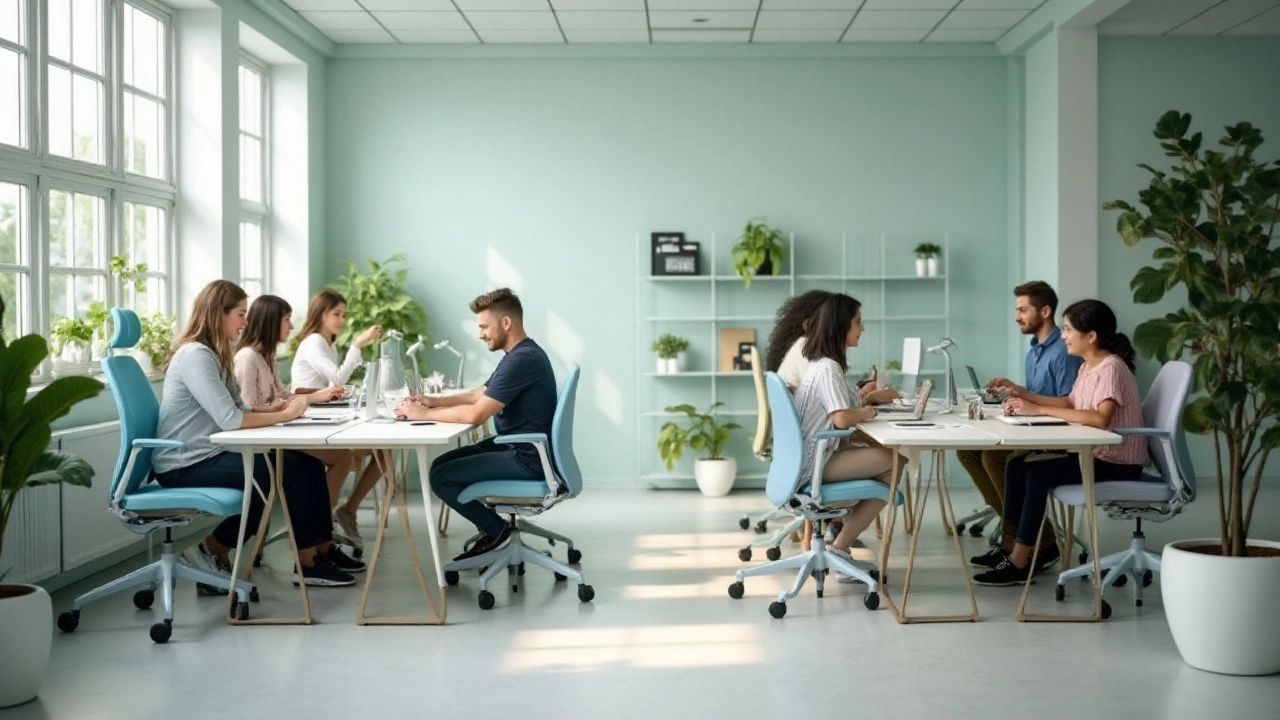Office Chairs for ADHD – Find Focus‑Boosting Seating
If you or someone you care for has ADHD, sitting still at a desk can feel like a battle. The right chair can turn that struggle into a smoother workday. Below you’ll get practical pointers on what to look for, why certain features matter, and how a good seat can help keep attention where it belongs.
What Makes a Chair ADHD‑Friendly?
First off, an ADHD‑friendly chair isn’t just a regular office chair with a fancy name. It’s built to let the body move a little without losing support. Small motions, like rocking or shifting weight, give the brain the sensory input it craves, so you stay alert instead of drifting off.
Key traits include a flexible seat cushion, a back that follows the spine, and a base that lets you swivel or tilt. When you can lean forward, lean back, or even bounce a bit, you’re less likely to get that restless feeling that steals focus.
Top Features to Look For
Active Sitting Mechanisms. Chairs with built-in wobble or balance pads let you gently rock while you work. The movement is subtle enough not to distract coworkers but strong enough to give your body a break from staying rigid.
Adjustable Height and Tilt. Everyone’s body is different, especially if you have a desk that’s too low or too high. A chair that lets you raise, lower, and tilt the seat helps you find a posture that feels natural, reducing pressure on the lower back.
Breathable Materials. Mesh backs and soft, washable fabrics keep you cool during long sessions. Overheating can make restlessness spike, so staying comfortable is a hidden focus booster.
Armrests with Flexibility. Arms that move up and down or swing away let you rest your elbows when you need a pause, then get out of the way when you want to stretch.
Sturdy Base with Smooth Casters. A five‑point base offers stability, while wheels that roll easily across carpet or hard floor let you shift positions without standing up.
When you shop, test a few chairs if you can. Sit, lean, rock, and see if the movement feels helpful rather than distracting. If a chair feels too rigid, look for models with a wobble cushion or a seat that flexes under weight.
For home offices, consider budget‑friendly options that still include a mesh back and a tilt lock. For larger workplaces, ergonomics programs often cover higher‑end models with built‑in active sitting features.
Remember, the chair is just one piece of the puzzle. Pair it with a standing desk, short movement breaks, and a clutter‑free workspace to keep the mind sharp.
Bottom line: the best office chair for ADHD is the one that lets you move just enough to stay comfortable, supports your spine, and doesn't break the bank. Keep these features in mind, try a few seats, and you’ll find a chair that helps you stay on task without the constant urge to get up.
Best Calming Colors for Office Chairs for Individuals with ADHD
Discover how selecting the right color for office chairs can create a calming workspace for individuals with ADHD. Different hues impact concentration, mood, and productivity in unique ways. Explore which shades are known for their soothing effects, drawing on insights from color psychology. Utilize these tips to design an environment that enhances focus and appeases restlessness. Learn how to transform a chaotic space into a serene haven through thoughtful color choices.
More
